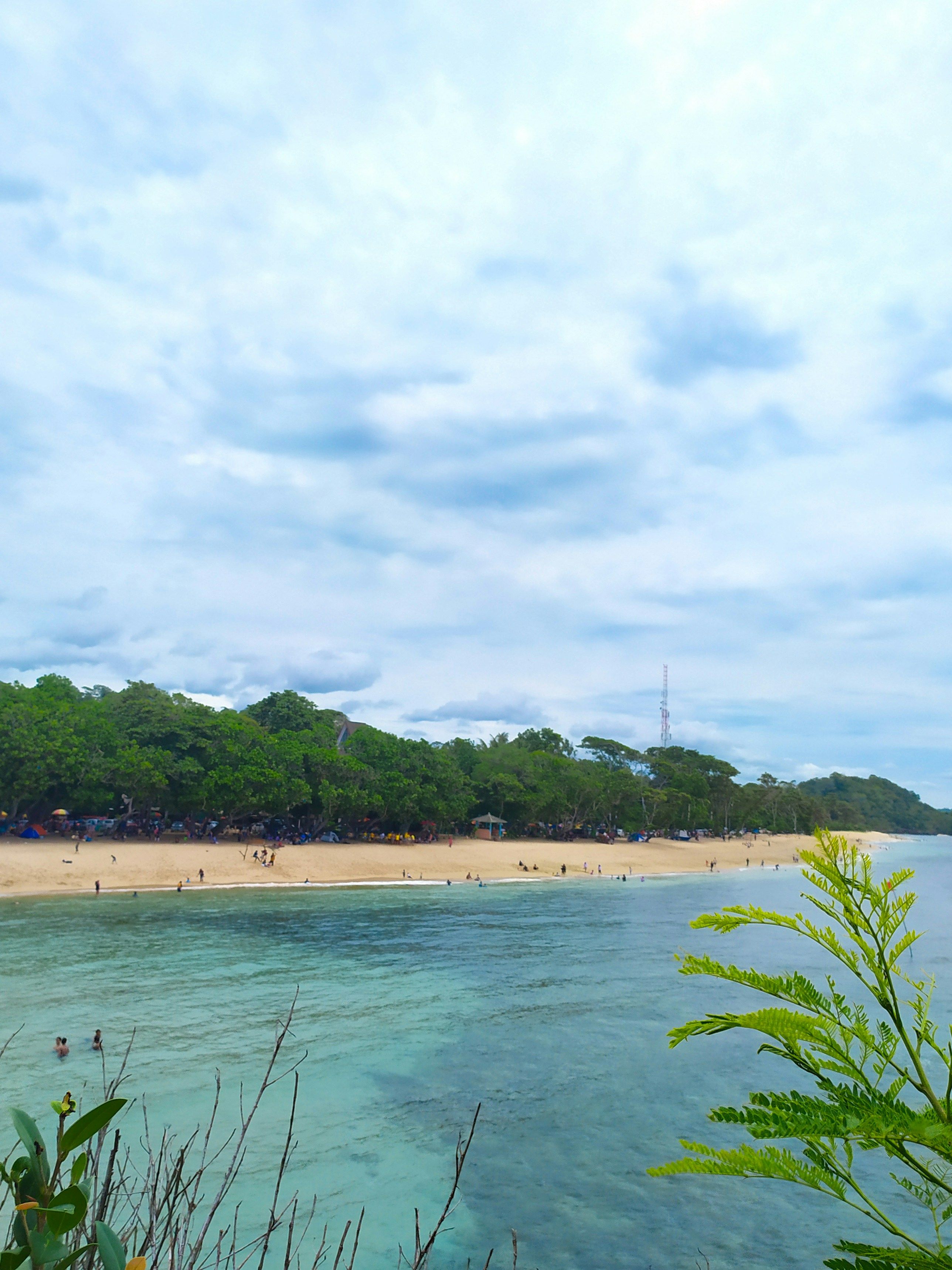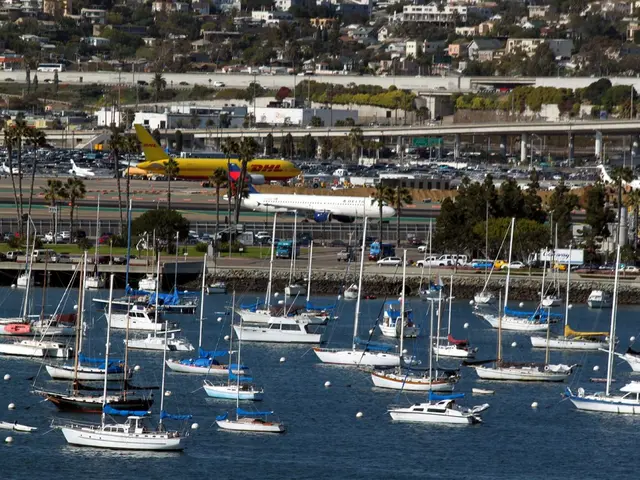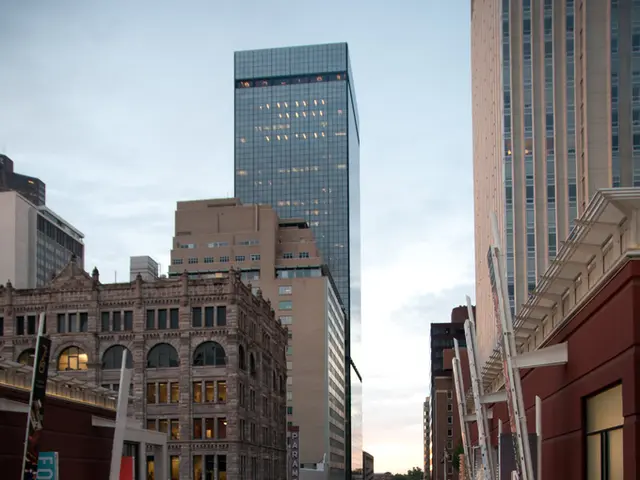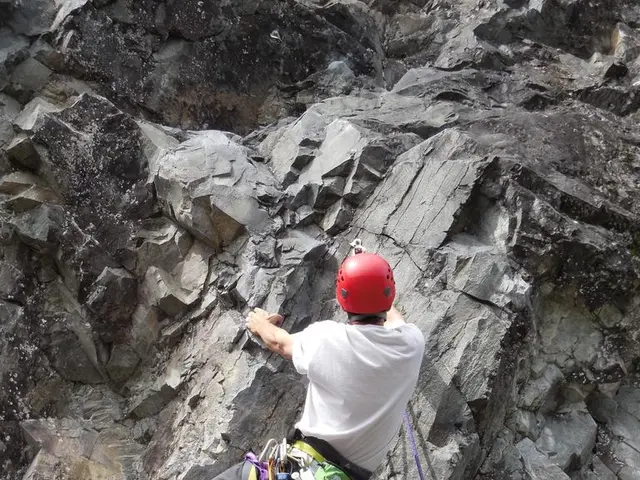Grooving with a Mountainous Peppering: Alpine Museum's Alpine Relief and Historic Biwak Hangout
Alpine Museum Unveils: Alpine Emergency Relief and Historical Bivouac Trunk - Alpine Exhibit: Showcasing Alpine Topography and Historical Mountain Shelters
Let's take a gander at the revamped garden of Munich's Alpine Museum, filled with fresh additions that'll make your eyes pop. Topping the list, an authentic Alpine relief gets laid out! Don't forget the historical biwak box from the Zugspitz region and the vintage Höllentalangerhütte from 1893/1894, baby! The Alpinum, a mini Alpine landscape, boasts various vegetation levels, homes to protected plants like alpine violets and edelweiss!
The Alps, Chiseled in Sand
Prepare to be bewitched by the showstopper: a 30 square meter Alpine relief created via 3D printing on a sand base! It offers you a glimpse of the whole Alpine arc in a 1:100,000 scale, and it's not just any ordinary scale; peaks and locations are amplified double for better visualization! Brass tags and labels mark and identify individual spots!
Find time for a reflection at the memorial stone dedicated to Jewish mountaineers denied membership in the Alpine Association. Release some climbing energy with the bouldering stones!
All-inclusive, Barrier-free Nature
The garden and the Alpine Museum are now fully inclusive and accessible to all. Transforming a 6,000 square meter expanse on Prater Island into a harmonious blend of nature and museum!
The Alpine Museum reopened post a three-year construction period, with a juicy price tag of 10.5 million euros! It now boasts around 600 square meters of exhibition and event space, a gastronomic corner, library, and no air conditioning as part of the journey towards climate neutrality!
The permanent exhibition breathes life into more than two centuries of mountaineering history, from its initial scientific curiosity to present-day mountaineering mania!
Alpine Mythology
- Alps
- Munich
- German Alpine Association
- DAV
- Plants
- 3D
Sourced from Mountain X — The Ultimate Alpine Anthology, March 2022
Enrichment Data:
Historical Insights about Alpine Museum, German Alpine Association in Munich
The Alpine Museum of the German Alpine Association in Munich is a noteworthy cultural gem, fostering awe for the enchanting Alps, presenting a mix of art and the mountains' glorious beauty. Though historical details regarding the museum specifically might be scarce, let's delve into the broader aspects of the Alpine cultural significance in Germany.
The Alps and Their Cultural Spell
- Geographical and Cultural Synergy with Munich: Munich, nestled in southern Germany, neighbors the Alps, making it a vibrant gateway for Alpine adventures and cultural exchange. The city's proximity to the Alps has historically played a crucial role in shaping its artistic identity and cultural allure [2][4].
- Artistic and Historical Influence: The Alps have captivated artists across generations. The Alpine Museum probably reflects this by displaying artworks spanning from Dürer's time to the present, mirroring the enduring fascination with the Alps [1].
- Cultural Edge on Traditional Costumes: The dirndl, a traditional Alpine costume, has become a timeless symbol of cultural heritage in the region. Its popularity skyrocketed in the early 20th century as a beacon of regional identity and cultural expression [5].
Alpine Museum's Focus
- Geographical Wonders: The museum probably prioritizes highlighting the unique geographical features of the Alps, like their mountainous terrain and diverse ecosystems, through exhibits delving into Alpine geology, flora, and fauna.
- Artistic and Cultural Masterpieces: The museum exhibits art influenced by the majestic Alps, reflecting the cultural impact of the mountain range on art and society. This could encompass historical and contemporary works, showcasing the evolving perception of the Alps over time [1].
Though specific details about the museum's history and exhibits are scant, the Alpine Museum in Munich presents an enthralling blend of art, culture, and the natural beauty of the Alps, echoing the rich cultural heritage and fascination with the mountain range that has endured across generations!
- The Alpine Museum in Munich serves as a testament to the enduring fascination with the Alps, presenting a symphony of art and natural beauty.
- Vocational training programs focusing on sustainable and renewable energy could be essential additions to the museum, aligning with the contemporary push for climate-change mitigation.
- The museum could consider offering workshops in environmental-science, helping visitors understand the ecological importance of the Alps and how to contribute to their preservation.
- As the museum aims to be climate-neutral, investing in renewable-energy sources such as solar panels or wind turbines for its power needs would be a prudent move.
- The industrial section of the museum could highlight the role of the manufacturing industry in the Alps, focusing on environmentally-friendly practices.
- To foster a more comprehensive learning environment, the museum could partner with educational institutions to provide scholarships for students studying environmental-science, finance, or finance related to renewable-energy.
- Emphasizing the green initiatives and energy-efficient technologies within the Alps' manufacturing industry could boost public awareness and appeal to the region's growing eco-conscious audience.
- By incorporating vocational training in manufacturing with an emphasis on sustainable practices, the museum could empower local entrepreneurs in the industry to create innovative, eco-friendly products.
- To encourage entrepreneurship and innovation, the museum could host competitions or incubators focusing on sustainable manufacturing solutions and renewable-energy projects.
- With cooking increasingly viewed as a vocation, the museum could offer cooking demonstrations showcasing local Alpine cuisine prepared using sustainably-sourced ingredients and renewable-energy.
- The museum could collaborate with public-transit providers to offer discounted transportation passes for visitors, promoting sustainable travel to and from the museum.
- To attract a diverse crowd, the museum could adopt a strategy of diversity-and-inclusion, integrating perspectives from various cultural backgrounds in its exhibits and programming.
- Smart-home devices and wearables that emphasize energy-efficiency could be displayed in the museum, demonstrating how technology can contribute to a sustainable lifestyle.
- The museum could organize leadership workshops focused on sustainable development and climate-change awareness, empowering participants to become advocates for change in their communities.
- By incorporating interactive exhibits centered on renewable-energy and eco-friendly technologies, the museum could engage visitors in learning about sustainable solutions to climate-change.
- The museum could collaborate with local small-businesses offering sustainable products to create a vibrant, eco-friendly marketplace within its premises.
- To attract adventurous visitors, the museum could create an interactive section on mountaineering and alpinism, featuring climbing walls, hiking gear, and videos showcasing exciting alpine expeditions.
- The museum could partner with fashion-and-beauty brands that prioritize sustainability to showcase their eco-friendly designs and materials.
- A dedicated section featuring food-and-drink options that follow sustainable practices, such as organic, locally-sourced ingredients, could be a draw for visitors seeking a taste of authentic Alpine cuisine.
- The museum could capitalize on the popularity of investing and wealth-management by offering seminars and workshops on sustainable investing and wealth-management strategies.
- In the realm of home-and-garden, the museum could host workshops on eco-friendly gardening practices and smart-home-technology integration.
- By offering seminars on budgeting, debt-management, and financial-literacy, the museum could empower visitors to make informed decisions about their personal-finance and save for their future while considering the environment.
- The museum could create a banking-and-insurance section showcasing progressive financial institutions that prioritize ethical and sustainable practices, as well as offering financial advice on topics such as eco-friendly mortgages and green insurance options.
- With an increasing focus on fintech, the museum could explore the role of technology in transforming finance and investment, particularly as it pertains to sustainability and climate-change initiatives.
- To attract young visitors, the museum could create an interactive, digital exhibit highlighting the latest developments in artificial-intelligence, robotics, and data-and-cloud-computing, demonstrating their potential in reducing humanity's impact on the environment.
- By offering travel tips and suggestions for adventure-travel, cultural-travel, and budget-travel within the Alps, the museum could inspire visitors to explore the region while minimizing their carbon footprint.
- A section focused on car-maintenance and the emergence of electric-vehicles could appeal to visitors interested in pursuing a more sustainable mode of transportation, encouraging a shift away from conventional fossil fuel-powered cars.








